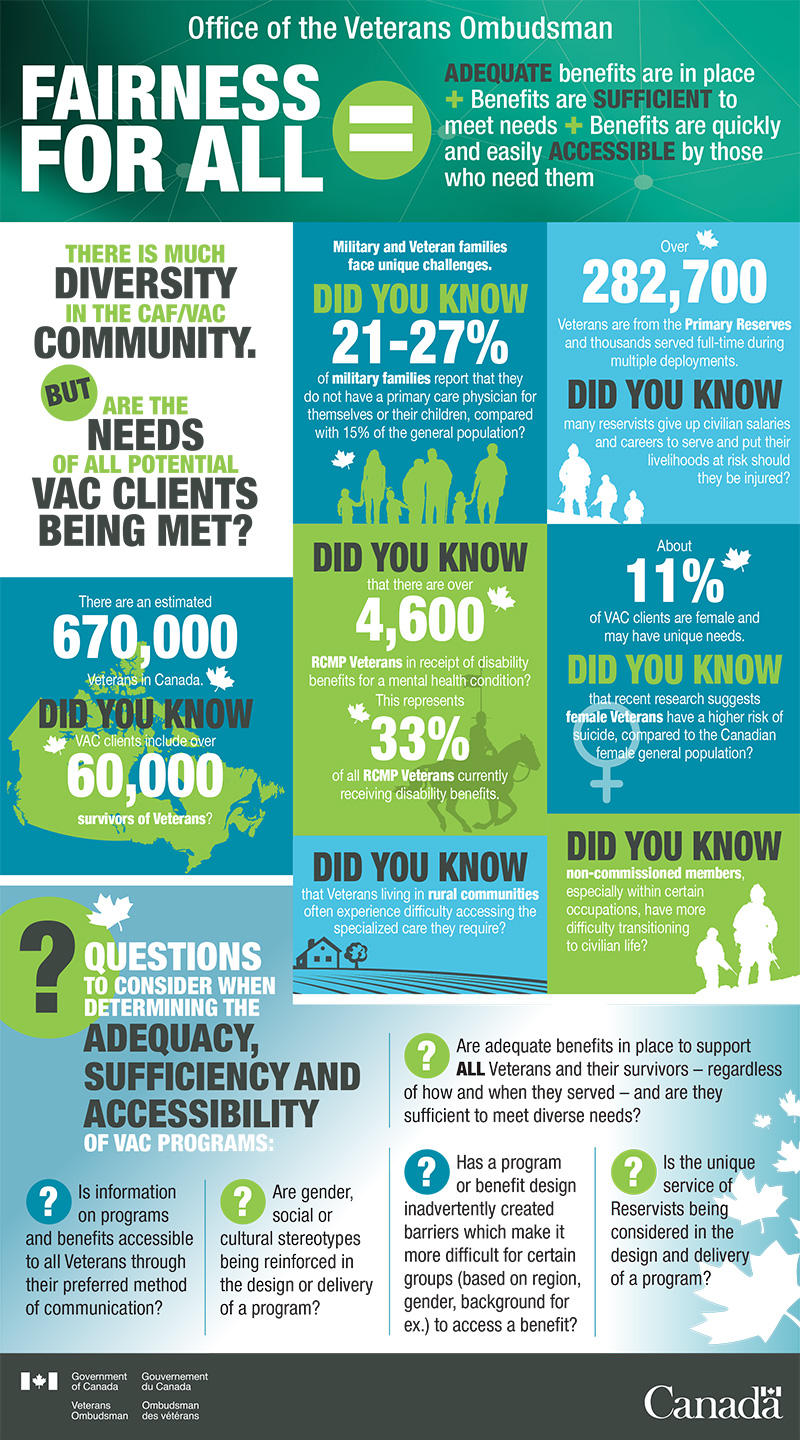Fairness for all - Infographic
FAIRNESS FOR ALL =
ADEQUATE benefits are in place + Benefits are SUFFICIENT to meet needs + Benefits are quickly and easily ACCESSIBLE by those who need them
There is much diversity in the CAF/VAC community. But: Are the needs of all potential VAC clients being met?
There are an estimated 670,000 Veterans in Canada. Did you know VAC clients include over 60,000 survivors of Veterans?
Over 282,700 Veterans are from the Primary Reserves and thousands served full-time during multiple deployments. Did you know many reservists give up civilian salaries and careers to serve and put their livelihoods at risk should they be injured?
Did you know non-commissioned members, especially within certain occupations, have more difficulty transitioning to civilian life?
Military and Veteran families face unique challenges. Did you know 21 -27% of military families report that they do not have a primary care physician for themselves or their children, compared with 15% of the general population?
Did you know that there are over 4,600 RCMP Veterans in receipt of disability benefits for a mental health condition? This represents 33% of all RCMP Veterans currently receiving disability benefits.
About 11% of VAC clients are female and may have unique needs. Did you know that recent research suggests female Veterans have a higher risk of suicide, compared to the Canadian female general population?
Did you know that Veterans living in rural communities often experience difficulty accessing the specialized care they require?
Questions to consider when determining the adequacy, sufficiency and accessibility of VAC programs:
- Are adequate benefits in place to support all Veterans and their survivors – regardless of how and when they served - and are they sufficient to meet diverse needs?
- Is information on programs and benefits accessible to all Veterans through their preferred method of communication?
- Are gender, social or cultural stereotypes being reinforced in the design or delivery of a program?
- Has a program or benefit design inadvertently created barriers which make it more difficult for certain groups (based on region, gender, background for ex.) to access a benefit?
- Is the unique service of Reservists being considered in the design and delivery of a program?
